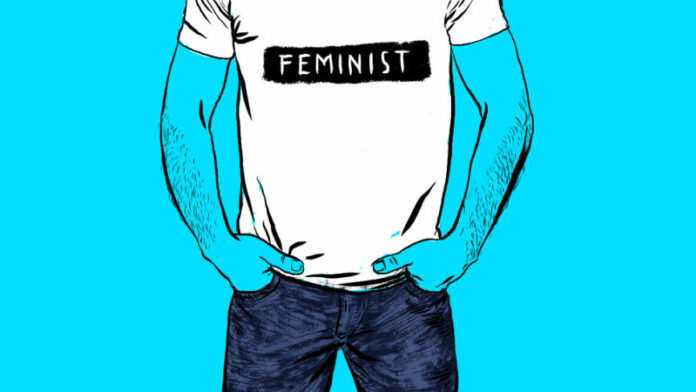The #MeToo movement has emerged as a potent social phenomenon, catalyzing global conversations around sexual harassment, assault, and gender-based violence. However, one prevailing characteristic is that discussions often seem to exclude men from their narratives. This article seeks to explore the gendered boundaries of the campaign, examining the reasons behind the marginalization of male experiences and perspectives within the context of this powerful movement.
While the #MeToo movement has given voice to many women’s experiences of oppression and trauma, particularly in contexts of sexual violence and systemic inequality, it has also been perceived, albeit wrongly, as an antifeminist or anti-male campaign. This article delves into the socio-cultural constructions of masculinity, the inherent power dynamics at play, the historical context of feminist movements, and the ways in which these elements collectively create barriers to including men in the discourse.
At the heart of this exclusion is a complex interplay of societal definitions of masculinity and femininity. The concept of hegemonic masculinity, primarily articulated by Raewyn Connell, refers to the dominant form of masculinity that not only valorizes male power but positions men in opposition to women. Masculine identity is often constructed through the negation of the feminine, and therefore, environments that celebrate vulnerability or emotional openness—characteristics more culturally aligned with femininity—are typically less accessible to men.
Moreover, this rigid construction of masculinity discourages men from openly discussing their experiences with sexual harassment or assault. Those who align themselves with hegemonic ideals may fear that acknowledging their victimization would undermine their masculine identity. As a result, many men remain silent about their experiences of abuse, sexual violence, or harassment, thus contributing to the perception that the #MeToo movement pertains predominantly to women. This lack of representation creates a feedback loop which reaffirms traditional gender roles.
In the discourse surrounding the #MeToo movement, the historical context of feminism plays a significant role. Feminist movements have strived for the recognition and validation of women’s experiences of victimization and injustice, often positioning these experiences as antithetical to patriarchal structures. The narratives are centered around the oppression of women, and while there are significant overlaps, men’s experiences tend to be sidelined. The historical patriarchal system has long perpetuated the idea that men are inherently the perpetrators while women are the victims, thus necessitating a reevaluation of these paradigms.
This framing can lead to a perceived zero-sum game, where the empowerment of women is seen to threaten male identity. Some men may feel alienated from the #MeToo narrative because they fear that acknowledging the complexity of male experiences might be interpreted as a betrayal of the cause or as an attempt to diminish the struggles women face. Consequently, men might refrain from participating in conversations related to the movement lest their voices dilute the urgency of women’s rights advocacy.
An inquiry must also be made into the implications of privilege that male individuals experience within gendered structures. Intersectionality, as explicated by Kimberlé Crenshaw, indicates that various forms of identity—including race, class, and gender—intersect to create distinct modes of discrimination or privilege. Within this framework, many men occupy positions of social power, leading to fears that the inclusion of male narratives could detract attention from the urgent plight of marginalized women. However, if diverse male experiences of abuse and harassment are excluded, the conversation becomes dangerously one-dimensional, failing to recognize that men can also be victims.
One often-overlooked aspect of male involvement in the #MeToo movement is the potential for solidarity through shared advocacy. By acknowledging that sexual harassment is an issue that affects all genders, the movement can foster a more inclusive discourse. Educational initiatives are essential to facilitate community discussions that deconstruct traditional gender roles while creating an empathetic space for men to share their experiences without fear of ridicule or disapproval. Efforts that focus on engaging men in allyship have the potential to amplify the movement’s impact. It becomes crucial to redefine masculinity as encompassing traits such as compassion, empathy, and vulnerability rather than dominance or aggression.
To address these gendered boundaries within the #MeToo movement, a strategic reconsideration is vital. Engaging male allies requires inviting their participation in educational programs that emphasize consent, respect, and emotional intelligence—qualities that can and should be encouraged among all individuals, irrespective of their gender. In doing so, the movement can extend beyond a dichotomy of victim and perpetrator and instead explore the broader societal patterns that perpetuate violence, ultimately creating a collective responsibility for change.
Furthermore, the inclusion of male voices is not merely about broadening the narrative but can also serve to challenge the stereotypes and norms that dictate how men and boys should act. Normalizing the conversation around male vulnerability can lead to more equitable gender relations. Educational practices that engage boys in discussions about consent, empathy, and the consequences of sexual misconduct can lay a foundation for a more nuanced understanding of masculinity, countering the dominance of hegemonic ideals that perpetuate violence against all genders.
In summary, while the #MeToo movement is a powerful vehicle for advocating women’s rights and highlighting gendered violence, it also poses challenges regarding the inclusion of male experiences in the dialogue. The barriers rooted in societal norms related to masculinity, the historical context of feminism, and intersectional considerations illuminate the complex landscape that must be navigated to foster a truly inclusive movement. As the movement evolves, the potential for broader representation offers the possibility of dismantling restrictive gender norms and establishing a more equitable society. In this way, the inclusion of male narratives does not detract from the cause but rather enriches the collective struggle for rights and justice across all genders.





























